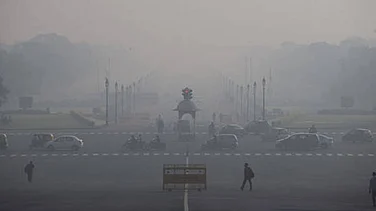According to the India Meteorological Department (IMD), the monsoon season this year has been extremely unpredictable with a possible extension into October as the weather analysis points to its intent to stay well beyond September.
From erratic rainfall leading to natural disasters to the damage to the crops- the extended prevalence of monsoon has thrown a huge challenge for the farmers as well as the governments as they are all concerned about the devastating consequences of prolonged rainfall.
Extended monsoon: A bane for Kharif crops
This year's extended monsoon brings trouble for the Kharif crops, also known as the monsoon crops, as a good yield depends on a well-timed retreat of the monsoon.
With excess rainfall leading to excess rain-soaking by the fields, the harvested production is deeply affected leading to an increased risk of crop losses as the crops Kharif crops like paddy, maize, and cotton are highly sensitive to moisture levels.
According to data from the Ministry of Agriculture, erratic rainfalls and natural calamities damaged 33.9 million hectares of cropped area
What can be done to save the crops?
As extreme weather events and sudden changes in weather patterns are becoming more common across the globe, experts suggest the formulation and adaptation of more and more climate-resilient agricultural practices. An overhaul of agricultural planning is becoming extremely relevant with the exacerbating effects of climate change.
The most commonly recommended measures to safeguard crops from erratic environmental conditions include diversification of crops, improving drainage systems, and adopting drought and flood-resistant varieties.
"One of the most notable changes is the extension of rains into October, especially in the Indo-Gangetic plains. Regions in Uttarakhand, Uttar Pradesh, Bihar, and Jharkhand, which typically prepare for harvest in early October, are now receiving unseasonal rains, delaying harvests and threatening the quality of crops like rice, maize, and pulses," said Vishwas Chitale, Senior Programme Lead at Council on Energy, Environment and Water (CEEW), as per reports.
Extended monsoon: The shift in weather pattern
According to climate experts, the primary reason behind the extended monsoon is the slowed-down southwest monsoon onset and withdrawal leading to heavier-than-expected rainfall in northern and western parts of the country.
This year the arid and semi-arid regions of western states like Gujarat and Rajasthan have witnessed a shift from moderate monsoons to heavy and very heavy ones leading to extreme conditions like floods.
Climate change: The impetus behind the shift
Experts point to climate change as the fundamental reason behind the unpredictable and intensifying monsoon patterns in India.
Changes in the ocean surface temperature towards the warmer direction temperatures are playing a pivotal role in bringing atmospheric changes and increasing moisture levels leading to catastrophic events triggered by heavier torrential downpours.
The El Nino and La Nina events
El Nino and La Nina, the opposite extremes in the El Niño/Southern Oscillation (ENSO)cycle, further amplify this unpredictability of weather patterns. While El Niño causes weakened monsoons, La Nina leads to incessant rains and catastrophic floods.
El Niño, in simple words, is defined as a weather pattern involving abnormal warming of surface waters in the equatorial Pacific Ocean leading to extreme heat in many parts of the world and the ocean.
According to National Oceanic and Atmospheric Administration (NOAA), La Niña, on the other hand, demonstrates the opposite effect of El Niño. During La Niña events, trade winds are even stronger than usual, pushing more warm water toward Asia. Off the west coast of the Americas, upwelling increases, bringing cold, nutrient-rich water to the surface. These cold waters in the Pacific push the jet stream northward.












.jpg?auto=format%2Ccompress&fit=max&format=webp&w=768&dpr=1.0)









